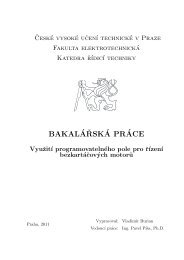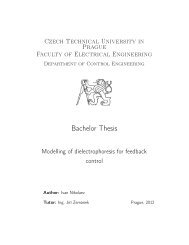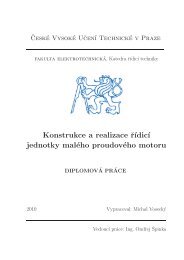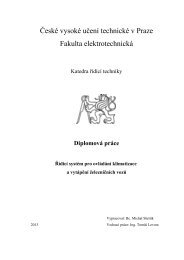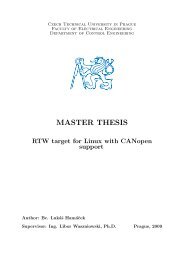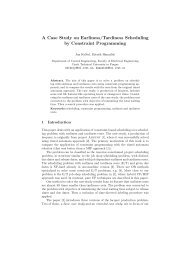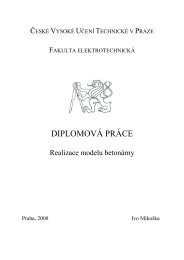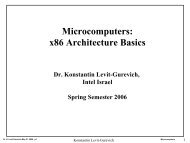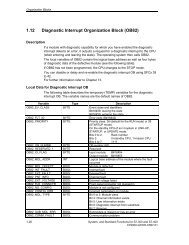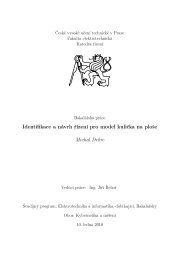Modeling and Optimization of Traffic Flow in Urban Areas - Czech ...
Modeling and Optimization of Traffic Flow in Urban Areas - Czech ...
Modeling and Optimization of Traffic Flow in Urban Areas - Czech ...
You also want an ePaper? Increase the reach of your titles
YUMPU automatically turns print PDFs into web optimized ePapers that Google loves.
10 Chapter 2 Simple Light Controled Intersection Modelphase 2phase 1Fig. 2.3: Simple <strong>in</strong>tersection model2.3 Simple Intersection ModelThe queue model described above will now be used to construct a simple<strong>in</strong>tersection model (see Fig. 2.3). The <strong>in</strong>tersection consists <strong>of</strong> two streets(i.e., two queues) <strong>and</strong> one cross<strong>in</strong>g area (which is a shared resource). Theoutgo<strong>in</strong>g flow q for each queue is controlled by the <strong>in</strong>tersection lights.The simple <strong>in</strong>tersection model is described byx M (k + 1) = F (x M (k), q(k), h(k)) , (2.9)where x M (k) = (x 1 (k), x 2 (k)) T conta<strong>in</strong>s the state vectors <strong>of</strong> the two queues.The full <strong>in</strong>tersection state vector is hence given byx M (k) = (n 1 (k), E 1 (k), n 2 (k), E 2 (k)) T (2.10)Here, F is a non-l<strong>in</strong>ear function given by (2.3) <strong>and</strong> (2.4). The vector q(k) =(q 1 (k), q 2 (k)) T represents the outgo<strong>in</strong>g flow for the queues <strong>and</strong> the vectorh(k) = (h 1 (k), h 2 (k)) T represents the <strong>in</strong>com<strong>in</strong>g flow.2.3.1 L<strong>in</strong>ear modelA l<strong>in</strong>ear model is constructed via l<strong>in</strong>earization <strong>of</strong> the function F around anequilibrium po<strong>in</strong>t (Subsection 2.2.3). The equilibrium po<strong>in</strong>t was selected



